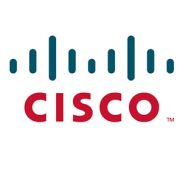SNMP is an application-layer protocol that provides a message format for communication between managers and agents. The SNMP system consists of:
-
an SNMP manager,
-
an SNMP agent,
-
and a MIB.
The SNMP agent contains MIB variables whose values the SNMP manager can request or change. A manager can get a value from an agent or store a value into the agent. The agent gathers data from the MIB, the repository for information about device parameters and network data. The agent can also respond to a manager’s requests to get or set data.
An agent can send unsolicited traps to the manager. Traps are messages alerting the SNMP manager to a condition on the network. Traps can mean improper user authentication, restarts, link status (up or down), MAC address tracking, closing of a TCP connection, loss of connection to a neighbor, or other significant events.
|
Model |
Level |
Authentication |
Encryption |
Result |
|
SNMPv1 |
noAuthNoPriv |
Community string |
No |
Uses a community string match for authentication. |
|
SNMPv2C |
noAuthNoPriv |
Community string |
No |
Uses a community string match for authentication. |
|
SNMPv3 |
noAuthNoPriv |
Username |
No |
Uses a username match for authentication. |
|
SNMPv3 |
authNoPriv |
Message Digest 5 (MD5) or Secure Hash Algorithm (SHA) |
No |
Provides authentication based on the HMAC-MD5 or HMAC-SHA algorithms. |
|
SNMPv3 |
authPriv (requires the cryptographic software image) |
MD5 or SHA |
Data Encryption Standard (DES) or Advanced Encryption Standard (AES) |
Provides authentication based on the HMAC-MD5 or HMAC-SHA algorithms. Allows specifying the User-based Security Model (USM) with these encryption algorithms: DES 56-bit encryption in addition to authentication based on the CBC-DES (DES-56) standard. 3DES 168-bit encryption AES 128-bit, 192-bit, or 256-bit encryption |
configuring SNMPV2 is so simple, just write :
ro means read only and rw means read/write
configuring SNMPV3 needs three steps:
1- Defining View
iso means everything in MIB.
2- Defining Group
3- Defining User
PRTG is really good tool for grabbing information from devices which are working with SNMP. You can download this software and connecting around 100 sensors are free. In other word, you can use it for small business.
1-First, Add a New Device, and IPV4 address.

2- Second, Select SNMP version, type of Authentication(SHA-MD5) and enter your username and password.

3- Third, enter encryption type and Pre-shared key.

4- Add your desire sensor, there are alot of sensors for different devices, for example I add ping to this device.



